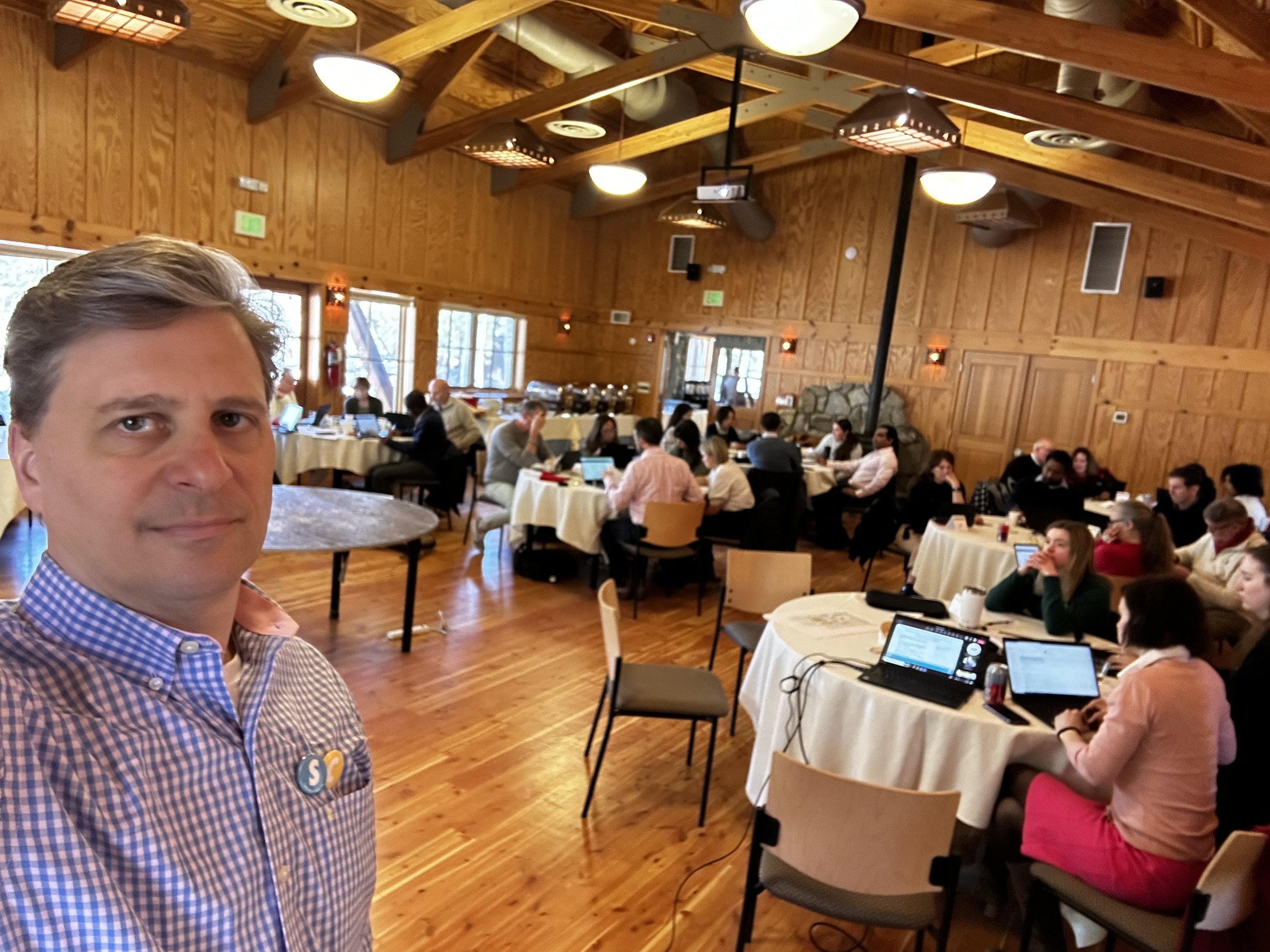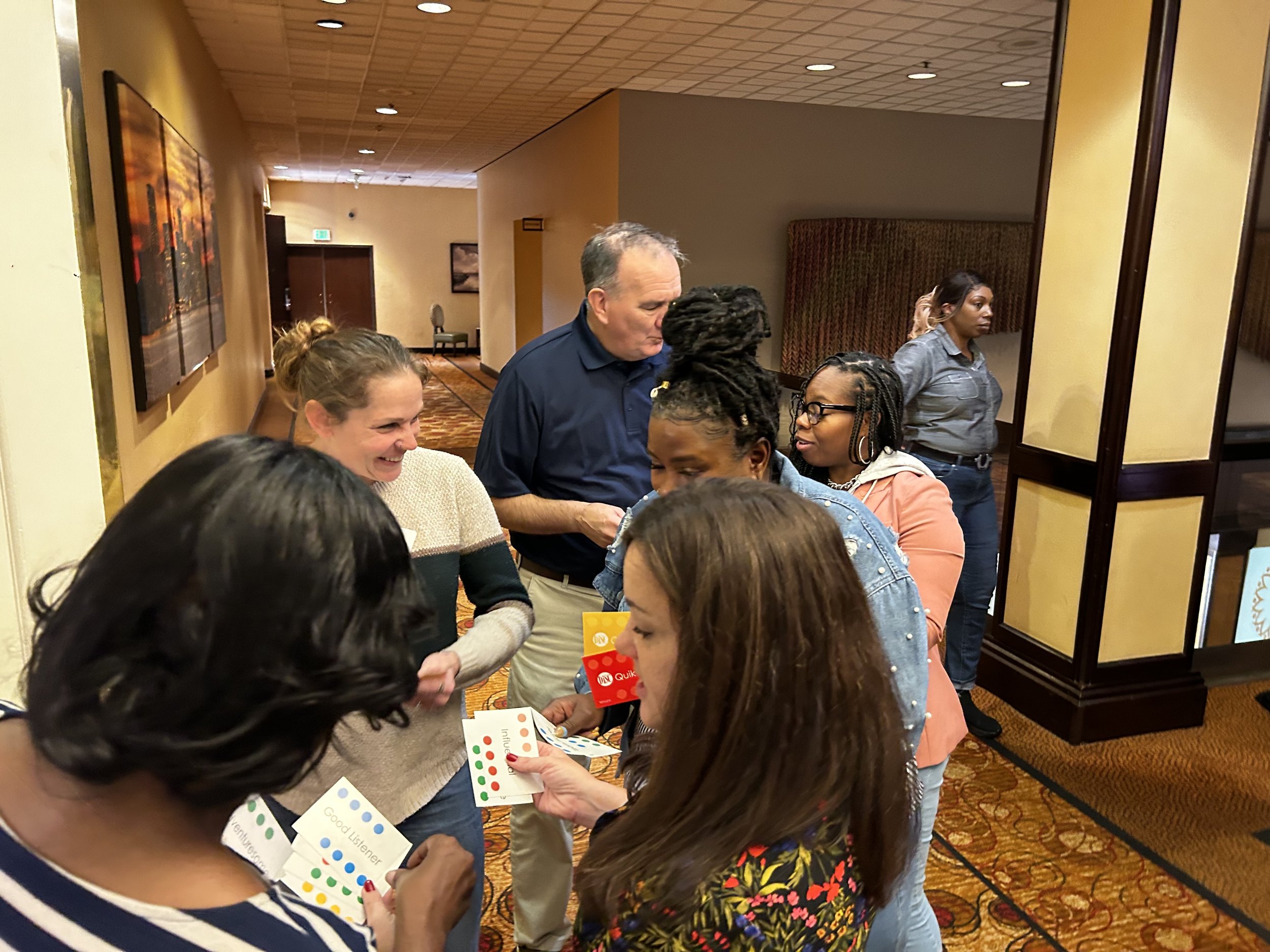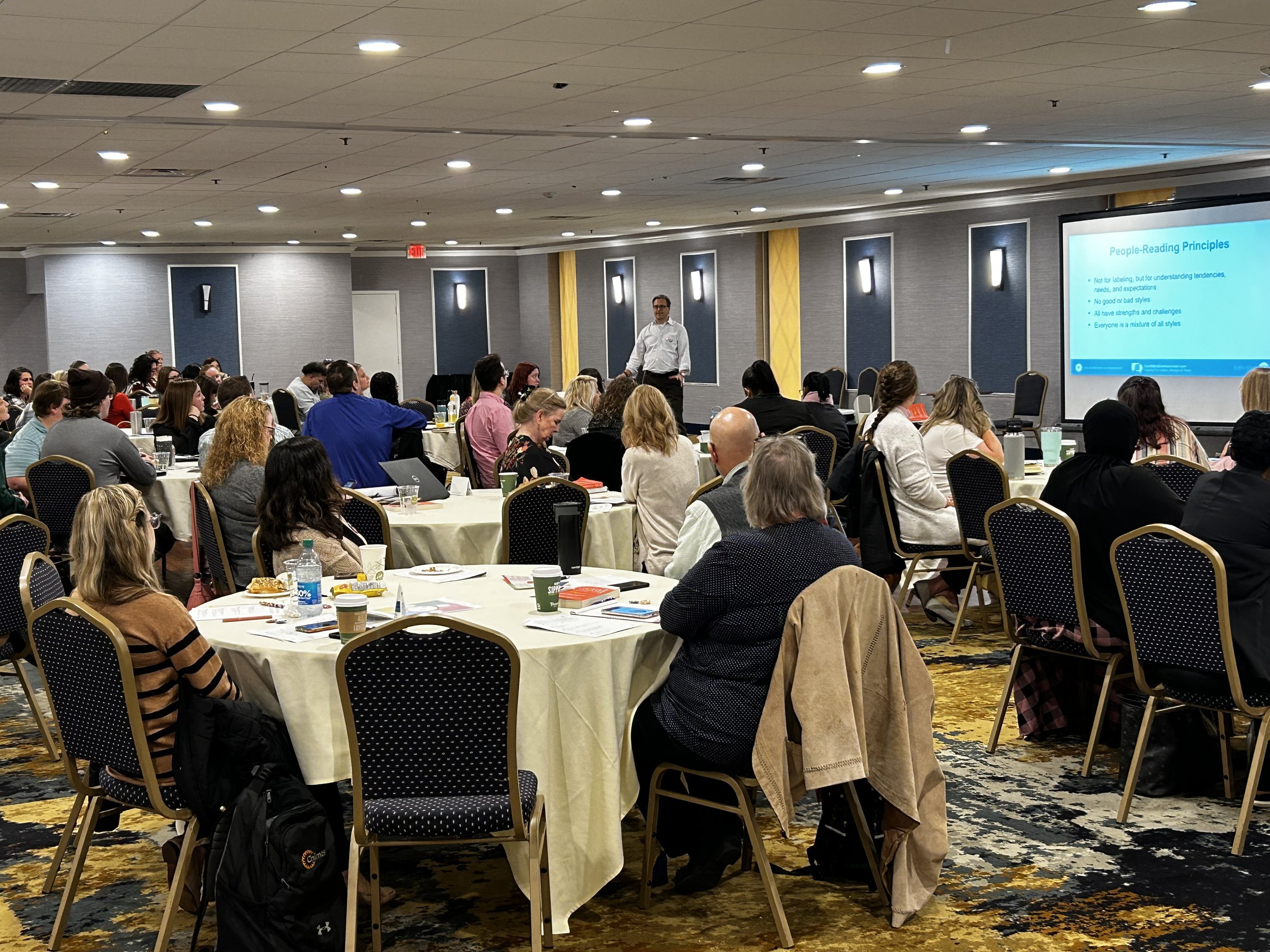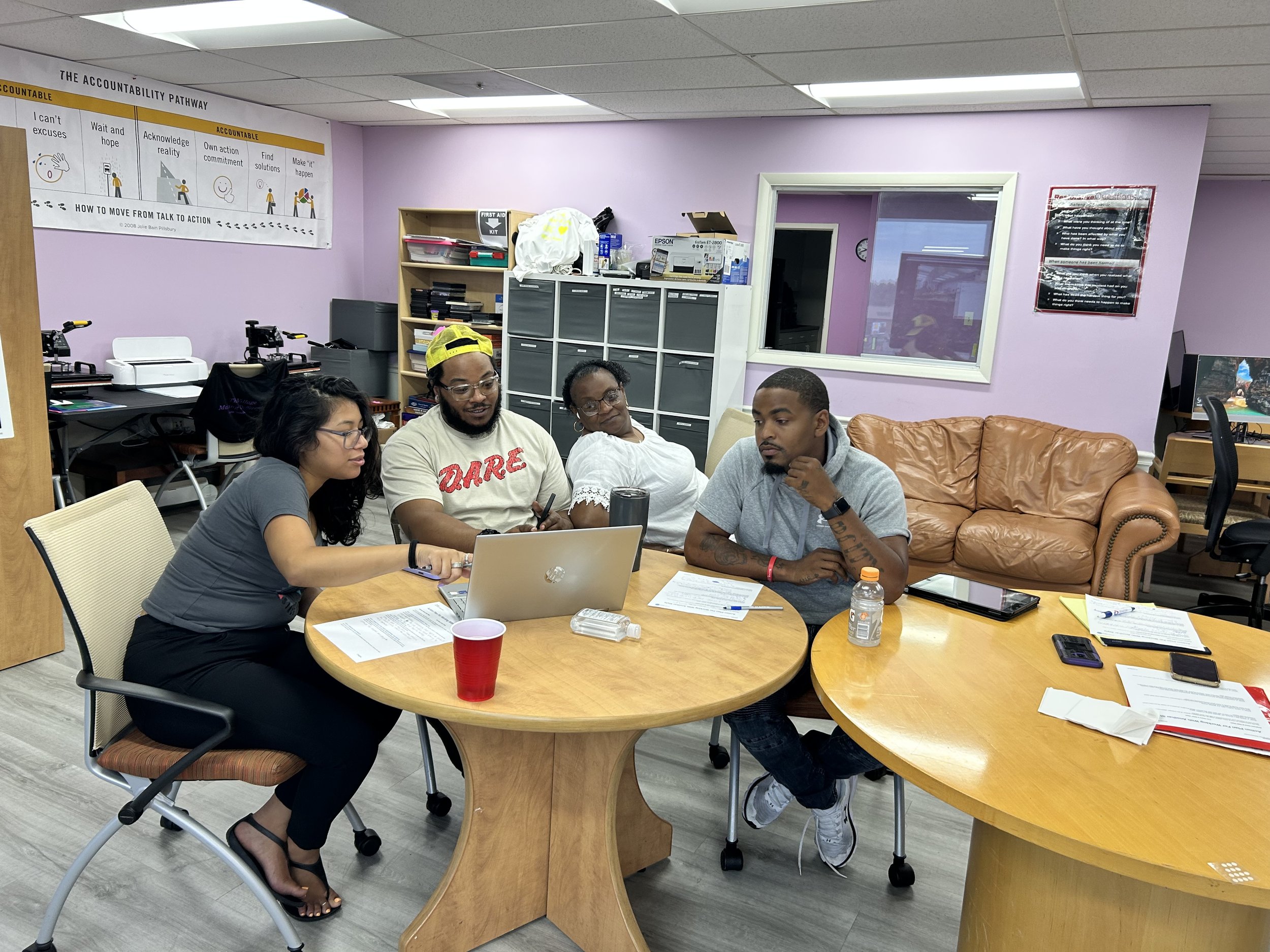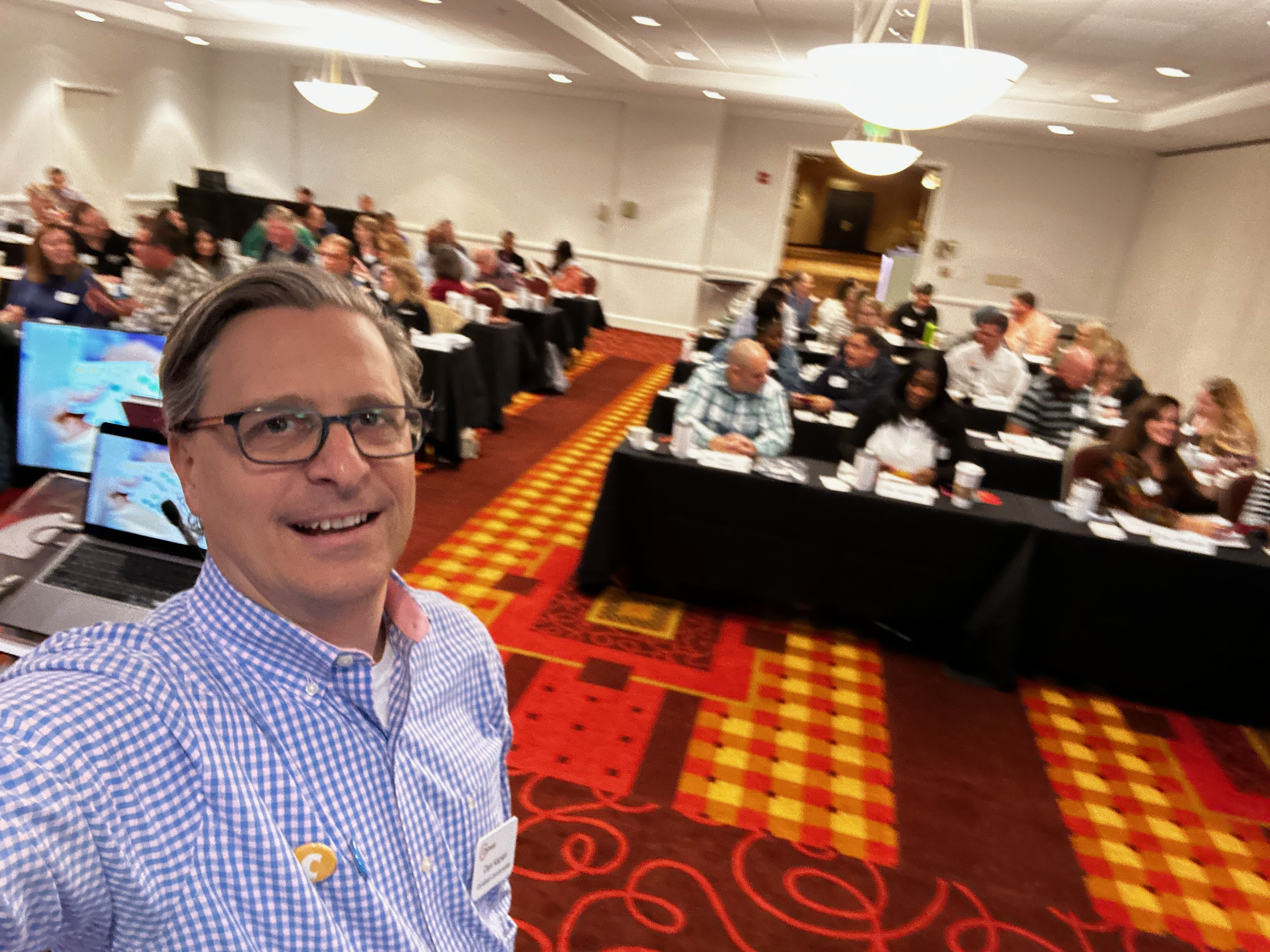
One-hour, In-Person or Virtual Presentations
Customized, High-Impact, Fun Presentations
Dan is also available for keynote speeches and conference presentations.
Dan Kaplan is driven by the belief that anything is possible if we can just learn to talk to each other. His one-hour presentations can be delivered in person or virtually to networking groups, associations, chambers, conferences, and other gatherings.
Customized to your audience’s needs, they are engaging, interactive, and empowering. And a lot of fun!
Materials such as handouts, books, or DiSC, 5 Behaviors, and Working Genius assessments can be included at an additional cost.
Presentation Topics
Influencing The Four Communication Styles
It's not what you say, but how you say it…or more accurately, what is heard. Did you know there are four communication styles? Based on a person’s DiSC style, someone may be a Direct, Influencer, Steady, or Conscientious communicator. Knowing and adapting to the communication style of the person you're talking to can help you connect, ensure your message lands, and get more from the relationship.
In this engaging, and interactive presentation workshop, participants will learn how to people read and identify someone’s communication tendencies, preferences, and blind spots. We will discuss how colleagues communicate, think, make decisions, act under stress, receive feedback, prefer to meet, appreciate being sold to, and most importantly, how to influence them.
Overcoming Your Team’s Communication Dysfunction
How well does your team communicate? Do they discuss issues openly…or do they hoard information? Do they trust each other enough to admit mistakes…or do they politic, posture, and promote themselves? Do they debate issues passionately…or avoid conflict with artificial harmony? Do they commit to decisions they disagree with…or drag their feet and undermine? Do they focus on collective results …or put their own needs ahead of the organization’s? Imagine what you could accomplish with a cohesive executive team. Really, is there anything more important to your success?
Pulling from leading communications resources and researchers – such as Patrick Lencioni's 5 Dysfunctions of A Team, Crucial Conversations, DiSC, Maslow’s Hierarchy of Needs, Carl Jung, Susan Scott’s Fierce Conversations, Kim Scott’s Radical Candor, Dale Carnegie, Gino Wickman, and of course the wisdom of other participants in the room – participants will take away practical strategies, exercises, and ways to build trust, master conflict, achieve commitment, embrace accountability, and focus on results.
Not only will you uncover your team's communications challenges, but you will improve your own communications, so you can better help your team listen, decide, prioritize, persuade, motivate, give feedback, trust, ask, focus on what matters, and inspire.
Identifying & Adapting To Your Customers’ & Prospects Communication Styles
It’s common practice to mirror a customer or prospect’s body language, but what if you could take this concept deeper and communicate in the very way they think, act, and see the world? You could quickly build rapport, connect, and influence buyers with more confidence.
Using over 70 years of behavioral science, the DiSC Sales & Customer Relationship model helps us understand people’s communication preferences, blind spots, and buying tendencies.
In this fun, interactive, engaging workshop, participants will understand their own sales tendencies, how to quickly read people to understand their buying style, and how to better navigate conversations and communicate more effectively for better results. Discover new strategies for stretching beyond their natural preferences to make external relationships more productive and successful, regardless of the customer’s communication style.
Communicating Change
When there’s a sizable change in organizations, people will react. As leaders and managers, if we often think that our teammates need the same things we do, but if we can better understand what the individuals we work with actually need during organizational change, then even a very small targeted action can make a profound difference in that person’s work and life. This presentation helps you better understand how people hear and process information about big changes, how to shorten the time between disorientation and re-orientation, and how to adapt your message about big changes to your audience, so it lands well, maintains morale, and reduces turnover.
Mastering Difficult Conversations
At the heart of healthy and high-performing organizations are people willing and able to hold difficult conversations. Bringing together strategies from the best-selling book Crucial Conversations and the psychology of DiSC, this interactive presentation helps participants learn the skills to talk when the stakes are high, including preparing for high-stakes situations, transforming anger and hurt feelings into powerful dialogue, making it safe to talk about almost anything, and being persuasive, not abrasive.
Learn the nine critical skills of getting unstuck, mastering my stories, start with heart, state my path, make it safe, learn to look, seek mutual purpose, explore others’ paths, and move to action.
Participants will use these strategies to workshop a real-life difficult conversation that they need to have or have been avoiding, so they can prepare and practice in a safe environment before the real thing.
Communicating Across Four Workplace Generations
Baby Boomers, Gen X, Millennials, and Gen Z all communicate differently and sometimes don’t understand each other. Feedback is misinterpreted, people are quick to judge, and we’re stuck in labels like “boomer” and “snowflake.”
What does it take to break free and connect with each other as humans, listen, empathize, and give grace? Talking about it!
This fun (and safe) panel discussion with four members of your audience can help bridge the gap between generational communication expectations and blind spots. We will start with a real-time anonymous survey to uncover misconceptions, hear about the four communication styles, and discuss with your panelists (one from each generation) how they prefer to communicate and receive feedback…and have fun laughing at ourselves.
Building Community & Connection In A Hybrid Workplace
Virtual and hybrid teams are as much as 3x more likely to engage in backstabbing, gossip, undermining, passive aggression, etc. 86% of employees and executives cite lack of collaboration or ineffective communication for workplace failures. The workplace will never return to “normal.” Fortunately, it is possible to build relationships and teamwork in a hybrid world.
Through a real-time survey, a presentation, and interactive exercises, participants will learn strategies they can use to reconnect with their co-workers and clients. Customized to the needs, real-life challenges, and personal objectives of the participants, this will be a meaningful, engaging, and interactive presentation where we will learn to read body language in virtual meetings, connect with co-workers on Zoom, and other effective strategies to build culture in virtual and hybrid workplaces.
Finding Joy In Teamwork
Patrick Lencioni’s newest book and model, the 6 Types of Working Genius. tells us that people who understand their “zones of genius” show up to work happier, are more effective, and play well with others. Leaders in their zones are more innovative, strategic, effective...and joyful.
This interactive workshop helps participants apply the concepts of the Working Genius in three key areas: burnout, project communications, and teamwork.
Topics include: understanding the impact of your energy at work; clarifying which types of work give joy and energy and which types are draining and difficult; avoiding making unfair and inaccurate judgments about one another’s motivation; alleviating guilt about struggles people have with certain types of work; improving dialogue and directives in team meetings; considering team members roles and responsibilities; and communicating across a project lifecycle.
Participants will identify the type of work that brings them joy and energy vs. work that leads to frustration and burnout; improve communication across the three phases of work, no matter the project; and how to improve team communication and cohesion. They will leave with an action plan for applying the tools and concepts to themselves and their teams.
Using DiSC To Improve Communication, Engagement, and Retention
While many organizations give their employees the DiSC Assessment, the PDF gets read once (maybe) and is soon forgotten. What a missed opportunity! Did you know this dynamic tool (which you may already have invested in) can be used to improve team communication and dynamics, employee engagement and contentment, and even improve retention and reduce turnover? DiSC can even improve an employee’s onboarding experience, relationship with their manager, and greater acceptance of change. Since the COVID pandemic, there have been significant advancements in how DiSC is delivered and leveraged. For example, employees can use an app to receive personalized advice on connecting, collaborating, getting buy-in, and managing tension with individual co-workers. This engaging, fun workshop provides a refresher of the 4 DiSC styles, best practices in use today, and a rundown of the newest tools, workshops, and mobile-friendly platforms that you can use to help your organization improve workplace, management, leadership, change, and conflict communication with emotional intellegence. Great for HR professionals and groups.
Using AI to Improve Human Communication
Artificial intelligence (AI) isn't just about robots and self-driving cars. It's revolutionizing how we connect and collaborate. But how can we harness its power to enhance our communication skills and build stronger relationships? In this engaging and interactive presentation, we will explore AI tools and technologies transforming communication; discover how AI can analyze communication patterns; identify biases, and provide personalized feedback to help you become a more effective communicator, learn how AI can break down language barriers, foster empathy, and facilitate meaningful conversations across distances; explore how AI can help resolve conflicts, improve team collaboration, and navigate difficult conversations with greater ease and confidence; and glimpse into the exciting possibilities AI holds for revolutionizing communication. Through learning by doing, this presentation will help participants discover their own valuable insights and practical strategies for leveraging AI to connect, collaborate, and communicate more effectively.

